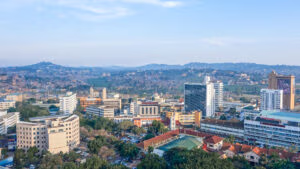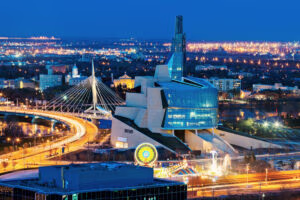Abbotsford-based Conair Aviation has been busy, to say the least, fighting forest fires not only in BC but all over the world. Luckily, they’ve got 51 years of experience to draw upon, and a slogan – “protecting our world” — to guide them.

From modest beginnings in 1969, Conair is now a leader in providing comprehensive aerial firefighting aircraft and services with a team of more 400 experienced professionals. With hundreds of proprietary supplemental type certificates (STC) for modifications of a variety of aircraft, Conair is the world’s most experienced aerial firefighting company.
Conair’s roots go back to Skyway Air Services, which operated through the postwar 40s, 50s and 60s as an aerial insect/crop spraying, pilot training business.
Aerial Firefighting Is About Continuous Improvement
Today, Conair boasts a fleet of 72 aerial firefighting aircraft with operations across Canada, the United States, France and Australia. “We just love what we do and have stayed curious about figuring out the best way to do our jobs to support the aerial firefighting industry. It’s never a matter of ‘That can’t be done’ when we are presented with a challenge; our teams always approach things from the perspective of ‘What do we need to do to make this happen?’ and that has served us well,” says chairman and CEO Barry Marsden about Conair’s success.
Over the years, 15 different aircraft types representing 180 individual aircraft have been developed specifically for aerial fire control operations as part of Conair’s continually evolving fleet. In a multi-million dollar deal with Bombardier in January 2018, Conair signed an agreement to purchase six Q400s that will be modified with Conair’s unique Retardant Delivery System for use by the government of France with whom Conair has enjoyed a 39-year relationship. The interiors will be modified to accommodate passengers, cargo, combi and medivac requirements making the Q400MR the most versatile air tanker in the world. President and COO Matt Bradley explains, “For example, we can change from an airtanker to a passenger/freighter in two hours or to a full medivac configuration in three hours.”

Protecting our world through aerial firefighting
New Tools for Wildfire Control Agencies
The RJ-85 is a solid aircraft that is designed, along with the Q400, to take over all the work of the Convair 580s and the L-188. Conair lead engineer Larry Pahl, who steered the development of the company’s patented RJ85 constant flow retardant delivery system, “The RJ is our immediate future,” says Larry, who is considered the world’s leading expert on tank design Real world simulation is the key to safe aerial fire control operations Wildfires are becoming increasingly more complex, aggressive and difficult to contain as climate change effects forest fuels.
Conair is investing in state of the art Level D simulation and distributed simulation technology that will enable multiple aircraft to fly in the same virtual airspace and simulate the emerging complexities of that environment, improving safety, improving efficiency, and contributing to a higher wildfire containment success rate. Conair’s real value proposition: its people. Decades of family-first summer barbecues and Christmas parties combined with a culture that empowers independent problem-solving means a noticeable energy on the people side of the balance sheet. Pilot Anthony Ussher talks of the unique relationship between pilots and Aircraft Maintenance Engineers (AMEs), for example.
“Typically an AMEpilot relationship is detached,” he says. “But here, the relationship is far more dynamic. We make most decisions together. We are both invested in the outcome, and honestly – they know the plane best.” It’s the same at head office, where management’s office doors are always open to ideas and input, from anyone with a well-researched proposition. Steve Vincent, a 12-year-AME observes “there are not many workplaces where most of us are separated by one degree from the founders.” He finds that unique and meaningful.
Aerial firefighting is a collaborative effort, in order to do our part we need to be up-to-date on the challenges facing the Wildfire control agencies and tailor our products and service to meet those challenges. It is all about continuous improvement. We plan on remaining on the fore front of aerial firefighting technology anticipating the changing environment and developing new products that meet the emerging challenges faced by our wildfire agencies, says Jeff Berry Director of Business Development.


Conair’s Global Footprint
Barry Marsden, who was named to both the Order of Canada and the order of British Columbia in 2014 for his contribution to aviation in Canada, adds, “With our work around the world, we don’t have a “fire season” like we did in the early days. At any given time, there are fires somewhere in the world and there is such satisfaction in the immediacy of knowing how what you’re doing is making a difference. I sure hope we are.”













